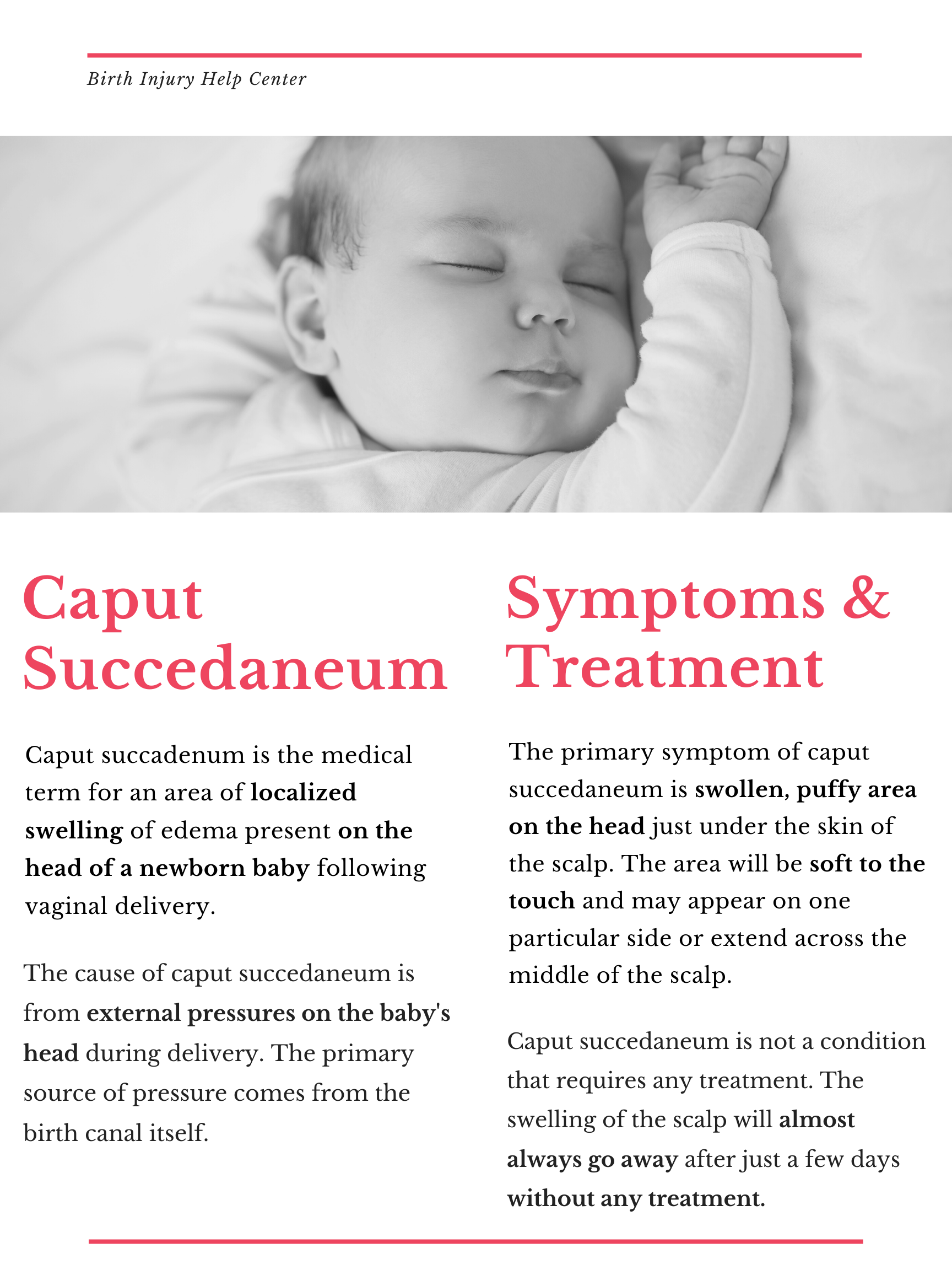“Caput succedaneum” refers to swelling, or edema, of an infant’s scalp that appears as a lump or bump on their head shortly after delivery. This condition is harmless and is due to pressure put on the infant’s head during delivery. It doesn’t indicate damage to the brain or the bones of the cranium. It can, however, lead to other issues, such as jaundice.
Though caused by similar factors, this condition should not be confused with cephalohematoma, which refers to bleeding under the scalp.
Prolonged pressure from the dilated cervix or vaginal walls on the baby’s head causes swelling, puffiness, and bruising. These are hallmark symptoms of caput succedaneum. A long, difficult labor with a lot of pushing can cause this condition. The use of vacuum suction or forceps also can increase the risk of this type of swelling.
Scalp swelling may be more likely if the amniotic sac membranes rupture early in labor. In some cases, if the membranes rupture very early or if there’s too little fluid in the amniotic sac, the mother’s pelvic bones will put pressure on the infant’s head. As a result, this kind of scalp swelling may occur before labor and can be seen in utero on ultrasound.
Generally, the longer there’s a fluid cushion around the infant, the lower the chances of scalp swelling.
The main symptom of caput succedaneum is puffiness under the skin of the scalp. The skin is swollen and soft. Pressing on it may result in a dimple in the flesh. The swelling may be on one side or may extend over the midline of the scalp. The effects are usually most apparent on the part of the skull that was the first to come down the birth canal.
There may be some discoloration or bruising, but this is not as extensive as in cephalohematoma. Once the swelling goes down, you may notice that your baby’s head is slightly pointed, due to the pressure on the bones of the head. This is called molding. This should go away over time. The bones of your baby’s head aren’t fused and can move considerably without damage.
A physical exam of the newborn infant is all that’s necessary for a diagnosis.
Caput succedaneum will clear up on its own within a few days. Any efforts to drain the fluid from the scalp can lead to other issues such as infection.
The swelling and bruising may increase the risk of infant jaundice, which is yellowing of the skin due to excess bilirubin in the blood. According to the Mayo Clinic, this should clear up without treatment within two to three weeks. Sometimes, untreated jaundice can lead to serious health problems, so make sure your child’s doctor addresses your concerns about jaundice.
If your child develops jaundice that doesn’t improve within several weeks, contact your child’s doctor. Blood tests may be necessary to determine the underlying cause of the jaundice.
No treatment is necessary for this condition, and there should be no long-term effects. The swelling should decrease within several days, and the scalp should appear normal within days or weeks.
A large or swollen head is a normal symptom of this condition. Your baby’s doctor will be able to diagnose their condition after delivery and can monitor their condition to make sure there are no lasting effects.

